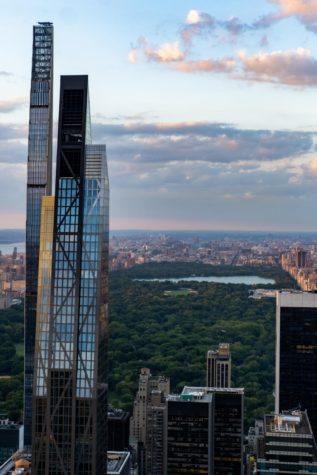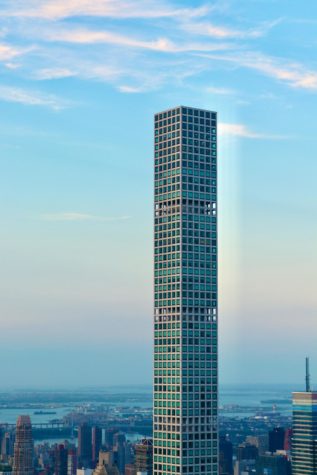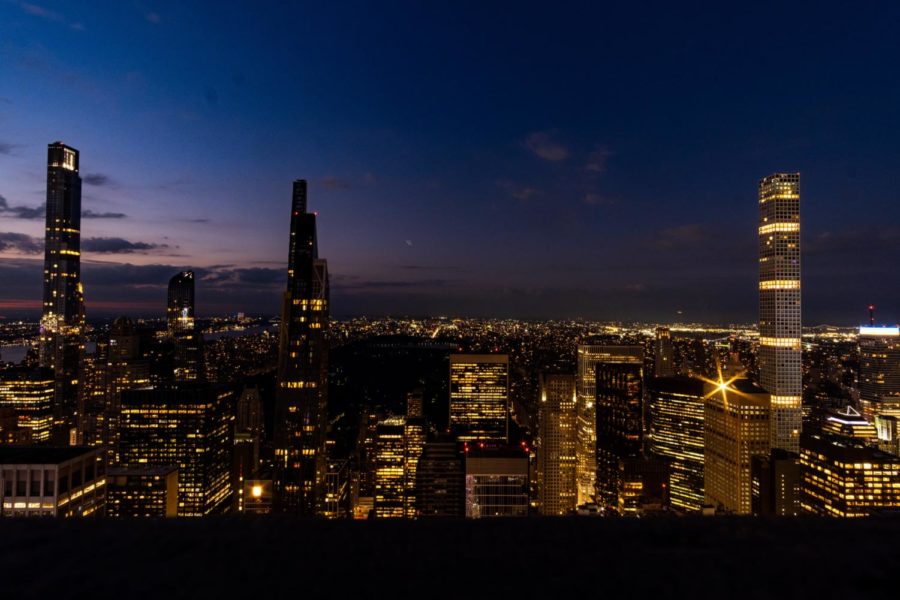Empty Mansions and Millionaire-Filled Streets in New York City
The infamous skyline isn’t as luxurious as it makes itself out to be.
These towers command an impressive view of New York City’s iconic skyline, with Central Park Tower, 53 West 53, and 432 Park Avenue standing side by side from left to right. Photo Credit: Dana Andreea Gheorghe / Unsplash
Each time you walk past 56 people on the streets of New York City, there’s a high chance that you just passed a millionaire. As the wealthiest city in the world, New York City is home to over 340,000 millionaires, 724 centi-millionaires, and 58 billionaires. However, despite this surplus of affluent individuals, the row of ultra-luxury apartments along 57th Street, also known as Billionaire’s Row, remains half-empty. As of 2022, there are 772 unpurchased units.
The development of this iconic skyline began in the late 2000s with the construction of One57, a 90-story skyscraper located at 157 West 57th St. Following this came 432 Park Avenue, a 96-story building that stands at a height of 1,396 feet, making it the tallest residential tower in the Western Hemisphere. Other notable buildings that have since joined Billionaires Row include 225 W. 57th St. (also known as Central Park Tower), 53 W. 53rd Street, 520 Park Ave, 252 E. 57th St, 111 West 57th (Steinway Tower), and 220 Central Park South, which made headlines for having one of its units sold for a whopping $238 million, the highest recorded price for a residential property. Billionaire’s Row is home to eight ultra-luxury skyscrapers, each equipped with luxurious amenities, ranging from cinema rooms to saunas. It’s no surprise each unit has an average sale price of $9.8 million.
Building the skyline, however, was no easy feat. The relentless surge of overdevelopment in recent years has significantly constrained the geographical landscape of Manhattan. Developers were given very small sites to work with, which raised difficulties in adhering to New York’s Floor Area Ratio (FAR), the ratio of total building floor area to the area of its zoning lot.

To overcome these limitations, developers had to adopt innovative strategies. One method was to purchase air rights, the right to build above an existing property, from nearby buildings in order to construct additional floors atop existing structures. This was exemplified by a multitude of projects, such as when the Museum of Modern Art (MoMA), sold a part of its land along with its air rights to 53 West 53rd Street, which sits above the world-renowned art gallery. These constraints have also prompted the creation of the skinniest tower in the world, 111 West 57th (Steinway Tower), which has a record-breaking width-to-height ratio of 1:24, with it being just 18 meters wide.
However, the utilization of these methods would trigger one of the numerous factors contributing to the dearth of potential purchasers. In the most recent incident, chunks of ice fell from the top of 111 West 57th Street (Steinway Tower), hitting a motorist, leading to a temporary closure of roads throughout the weekend. While ice falling from supertall buildings isn’t a new phenomenon, recent design features on modern supertall buildings, such as protruding sills, mullion caps, and angular exteriors, have increased the surface area where ice and snow can accumulate. This, coupled with reduced heat flow to optimize energy efficiency, created an environment more prone to the release and descent of ice and snow. It comes as no shock that residents of New York City, regardless of their socioeconomic status, were angry with the risks these luxury residential towers posed.
Those living inside weren’t exempt from danger either. Residents of 432 Park Avenue have frequently reported issues regarding plumbing that resulted in flooding and extensive water damage to their homes. In 2018, the situation escalated to the point where water was being propelled into elevator shafts, rendering the elevators inoperable for several weeks.
Additionally, the elevators themselves presented numerous hazards. Back in 2019, a management email highlighted an incident where a resident was stranded in an elevator for more than an hour due to strong winds. According to several residents, this occurrence was considered “common” since the elevators were programmed to reduce speed during such weather conditions in order to keep their resonant frequency in sync with the resonant frequency of the building.

In 2021, residents of 432 Park Avenue sued the developers CIM Group, Sponsor, and Macklowe Properties for $125 million plus punitive damages. The lawsuit alleged more than 1,500 construction and design defects in the building. According to the unit owners, the Sponsor had asserted that hundreds of defects had been rectified. However, upon reviewing the independent engineering reports, they discovered that only nine issues had been addressed, while hundreds of other problems remained unattended. The absence of transparency between unit owners and developers has created a challenge for buyers in placing trust in the developers’ dedication to uphold the quality and maintenance associated with the building’s price tag. With the increasing number of luxury residences emerging in Manhattan, potential buyers may find themselves considering alternative options where similar units are available at significantly lower prices.
Even so, not all individuals who purchase a unit actually make use of it. Some buyers treat units on Billionaire’s Row as a pied-a-terres, or a non-primary residence. However, the majority of buyers don’t live in the apartment at all. To them, these units are a secure place to allocate their funds as they are seen as low liquidity investments, or assets that are difficult to buy or sell quickly without affecting the market price. Additionally, owning a unit can qualify said wealthy individuals for tax exemptions. In New York City, condos are taxed as if they were rental apartment buildings. However, many problems arise with high-value apartments, such as the ones on Billionaire’s Row, as it is uncommon to rent an apartment worth up to $20 or $30 million dollars; in other words, there is no standard rental value to use as a benchmark. As a result, the units on Billionaires’ Row end up being taxed at the same rate as units that have a significantly lower value.
Many units, which are usually owned by foreign business owners, are acquired through shell companies, or legal entities often used for financial transactions that conceal the true ownership and control of assets or funds. Buyers, which can range from individuals to groups, can hide transactions under the names of accountants, lawyers, or bankers, further obscuring the identity of the true buyer. While it does serve as another way to invest money into luxury real-estate, these practices can potentially extend into illicit activities such as money laundering. Those who use this method of purchase typically buy their estate using cash only, making it easy to hide illegally-gained money. The de Blasio administration addressed this by reinforcing disclosure requirements on shell companies who buy or sell property in New York City.
Ultimately, it comes down to demand, which has experienced a decline in recent years due to various factors such as the Coronavirus pandemic, which heavily impacted the luxury real estate market. One example is the One57 building, which has experienced a more significant impact on demand compared to other properties. Resale units in One57 have reportedly faced an average discount of 25.4%, indicating a notable decrease in buyer interest. On the other hand, the average discount for resale units in 432 Park Avenue stands at 9.1%, indicating a relatively better performance. However, it is important to note that these statistics may have changed since their initial reporting.
Whether you find yourself in awe or at odds with its existence, Billionaire’s Row is a sight to behold. While it offers a glimpse into a world of unimaginable wealth, it also serves as a stark reminder of how wealth and power impact our urban landscapes.
Billionaire’s Row is home to eight ultra-luxury skyscrapers, each equipped with luxurious amenities, ranging from cinema rooms to saunas. It’s no surprise each unit has an average sale price of $9.8 million.
Chelsea Li is an Editorial Editor for 'The Science Survey' and reviews and edits articles published in this section prior to publication. She finds that...

